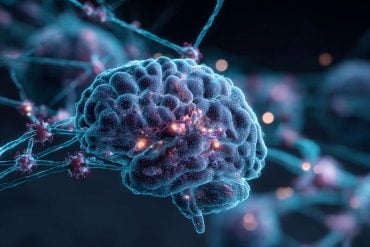Summary: New research reveals that people with cannabis use disorder (CUD) have elevated dopamine levels in a brain region associated with psychosis, such as schizophrenia. This may help explain why frequent cannabis use can increase the risk of hallucinations and delusions.
Using neuromelanin-MRI scans, researchers showed that dopamine-related brain signals were significantly higher in individuals with CUD, and the increase correlated with the severity of use. These findings may help healthcare providers educate youth and high-risk groups about the mental health impacts of chronic cannabis use.
Key Facts:
- Dopamine Spike: People with cannabis use disorder showed elevated dopamine signals in brain regions tied to psychosis.
- Risk Amplified: The more severe the cannabis use, the higher the dopamine signal—regardless of schizophrenia diagnosis.
- Youth Concern: One in five Canadian youth use cannabis frequently, underscoring the need for better public education.
Source: McGill University
A McGill University-led study found that people with cannabis use disorder (CUD) had elevated dopamine levels in a brain region associated with psychosis.
“This could help explain why cannabis use increases the risk of hallucinations and delusions, key symptoms of schizophrenia and other psychotic disorders,” said first author Jessica Ahrens, a PhD student in McGill’s Integrated Program in Neuroscience.

Dopamine is a neurotransmitter that helps regulate mood and motivation, and an excess is associated with psychosis. While it was known that cannabis influences dopamine, this study clarifies where in the brain these changes occur.
Cannabis use disorder is when someone has trouble controlling their cannabis use, continues despite negative effects, and may experience cravings or withdrawal.
“For a long time, clinical researchers across the world have been searching for a link showing that cannabis affects the brain mechanism behind psychosis. We now show that a shared dopamine pathway could be the answer,” Ahrens said.
The study involved 61 people, including those with and without cannabis use disorder, as well as individuals with early-stage schizophrenia, some of whom also had CUD. Using a specialized brain scan called neuromelanin-MRI, researchers at Western University measured their neuromelanin signal, which reflects dopamine activity.
People with CUD had an abnormally high neuromelanin signal, and the elevation was tied to the severity of their cannabis use. In contrast, those without schizophrenia or CUD did not show this increase. Larger studies are needed to confirm these findings.
Educating youth about cannabis risks
About one-in-five youth in Canada are cannabis users, consuming it daily or almost daily. Understanding the drug’s impact on mental health remains a pressing question.
“The lack of clear biological evidence linking cannabis to psychosis has made it harder to persuade young people with psychotic symptoms to reduce their use,” said Dr. Lena Palaniyappan, Professor of Psychiatry at McGill and Psychiatrist at the Douglas Mental Health University Institute.
“Our findings could help doctors and mental health professionals better educate patients about the potential risks of frequent cannabis use, especially for those with a family history of psychosis,” he said.
Future research will explore whether long-term cannabis use leads to lasting dopamine changes and whether these effects reverse after quitting.
About the study
Funding: The study was supported by the Canadian Institutes of Health Research, the Schizophrenia Society of Canada Foundation, the Canadian Consortium for Early Intervention in Psychosis, the Fonds de Recherche du Québec—Santé, the Quebec Bio-Imaging Network, the Canada First Research Excellence Fund, the Canada Research Chairs program and the Canada Foundation for Innovation.
About this psychosis and CUD research news
Author: Keila DePape
Source: McGill University
Contact: Keila DePape – McGill University
Image: The image is credited to Neuroscience News
Original Research: Open access.
“Convergence of Cannabis and Psychosis on the Dopamine System” by Jessica Ahrens et al. JAMA Psychiatry
Abstract
Convergence of Cannabis and Psychosis on the Dopamine System
Importance
Despite evidence that individuals with a cannabis use disorder (CUD) are at elevated risk of psychosis and that the neurotransmitter dopamine has a role in psychosis, the mechanism linking cannabis use and psychosis remains unclear.
Objective
To use neuromelanin-sensitive magnetic resonance imaging (MRI), referred to as the neuromelanin-MRI signal, a practical, proxy measure of dopamine function, to assess whether a common alteration in the dopamine system may be implicated in CUD and psychosis and whether this alteration can be observed in those with a CUD whether or not they have a diagnosis of first-episode schizophrenia (FES).
Design, Setting, and Participants
This longitudinal observational cohort study recruited individuals from 2019 to 2023 from an early psychosis service and the surrounding communities in London, Ontario. The sample included individuals with and without CUD, with some in each group also diagnosed with FES.
Exposures
FES and CUD diagnoses from the Structured Clinical Interview for DSM-5.
Main Outcomes and Measures
Neuromelanin-MRI signals within the midbrain (substantia nigra [SN]/ventral tegmental area [VTA]) including a subregion previously linked to the severity of untreated psychosis (a priori region of interest). Linear mixed-effects analyses were performed relating neuromelanin-MRI signals to clinical measures.
Results
A total of 36 individuals without CUD (mean [SD] age, 22.3 [3.2] years; 29 male [81%]; 12 with FES) and 25 individuals with CUD (mean [SD] age, 24.3 [4.7] years; 22 male [88%]; 16 with FES) participated in the study.
One-year follow-up was completed for 12 individuals with CUD and 25 without CUD. CUD was associated with elevated neuromelanin-MRI signal in a set of ventral SN/VTA voxels (387 of 2060 SN/VTA voxels, corrected P = .03, permutation test).
CUD was also associated with elevated neuromelanin-MRI signal in the psychosis-related region of interest (t92 = 2.12, P = .04) with a significant dose-dependent association (higher burden of CUD symptoms associated with higher neuromelanin-MRI signal, F1, 96 = 4.89; P = .03).
In contrast, participants with FES did not exhibit a significant elevation in neuromelanin-MRI signal (241 SN/VTA voxels had elevated signal, corrected P = .09). There was no association between time and neuromelanin-MRI signal.
Conclusions and Relevance
Elevated dopamine function in a critical SN/VTA subregion may be associated with psychosis risk in people with CUD. Cannabis was associated with the hypothesized final common pathway for the clinical expression of psychotic symptoms.







